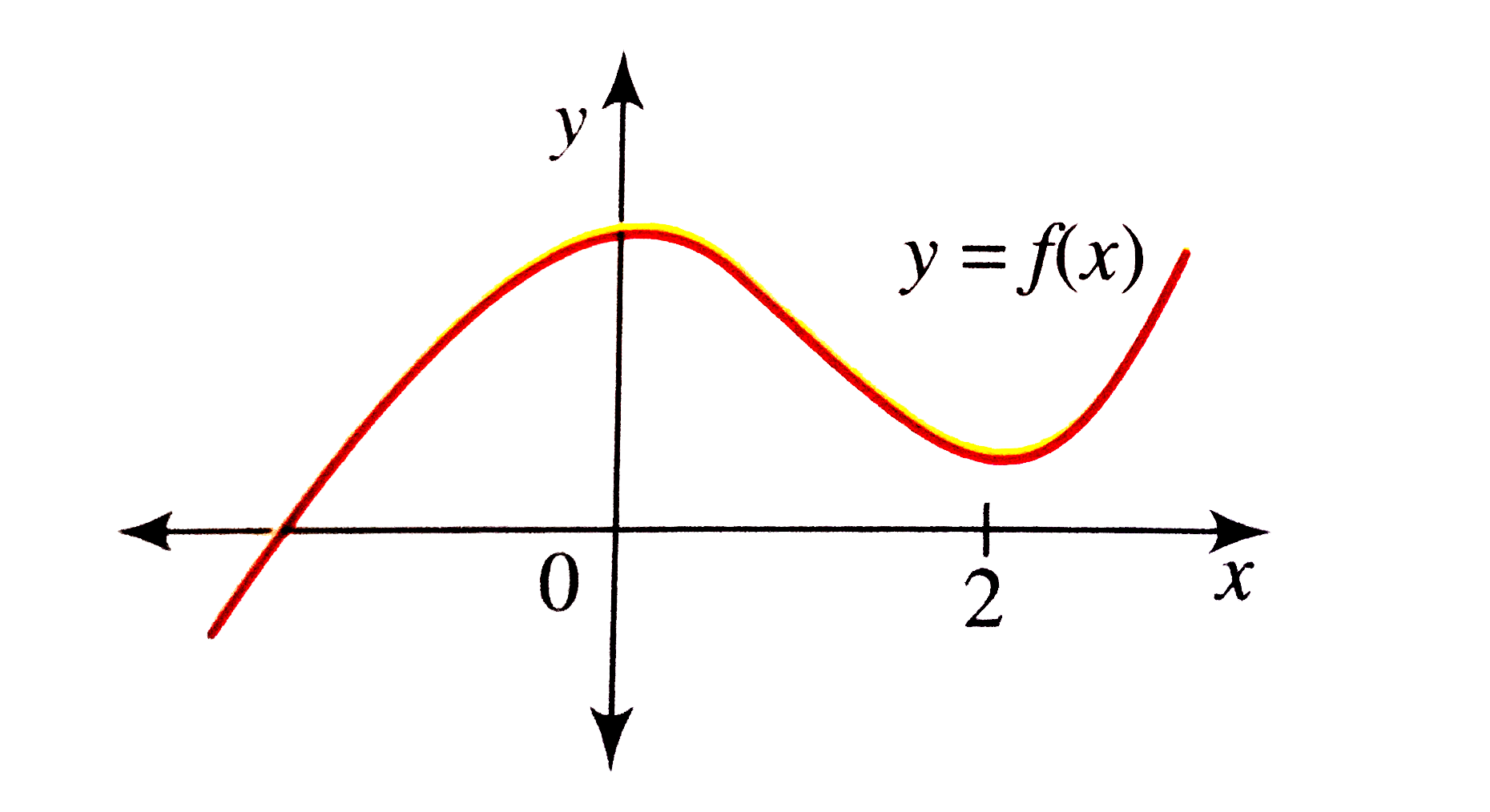Let f(x)=1+4x−x2,∀x∈R
g(x)=max{f(t),x≤t≤(x+1),0≤x<3}=min{(x+3),3≤x≤5} Verify conntinuity of g(x), for all x∈[0,5]
f(x)=x3−3x2+6
If f'(x)=3x2−6x=0, then x=0,2 are the critical points of f(x).
x=0 is the point of local maxima and x=2 is the point of local minima.
Clearly, f(x) is increasing in (−∞,0) and (2,∞) and decreasing in (0,2).

Case 1 : x+2≤0⇒x≤−2
⇒ g(x)=f(x+2),−3≤x≤−2
Case 2: x+1<0 and 0<x+2<2
x<−1 and −2<x<0
i.e., −2<x<−1 ∴g(x)=f(0)
Case 3: 0≤x+1,x+2≤2
⇒−1≤x≤0,g(x)=f(x+1)
⇒g(x)=⎧⎪
⎪
⎪
⎪⎨⎪
⎪
⎪
⎪⎩f(x+2), −3≤x<−2f(0), −2≤x<−1f(x+1), −1≤x<01−x, 0≤x<1
Topper's Solved these Questions
- BOOK - CENGAGE ENGLISHCHAPTER - GRAPHS OF POLYNOMIAL AND RATIONAL FUNCTIONSEXERCISE - Exercises17videos
GRAPHS OF POLYNOMIAL AND RATIONAL FUNCTIONS
- BOOK - CENGAGE ENGLISHCHAPTER - GRAPHICAL TRANSFORMATIONSEXERCISE - ILLUSTRATION78videos
GRAPHICAL TRANSFORMATIONS
- BOOK - CENGAGE ENGLISHCHAPTER - GRAPHS OF ELEMENTARY FUNCTIONS EXERCISE - EXERCISES34videos
GRAPHS OF ELEMENTARY FUNCTIONS
Similar Questions
Let f(x)=1+4x−x2,∀x∈R g(x)=max{f(t),x≤t≤(x+1),0≤x<3min{(x+3),3≤x≤5} Verify conntinuity of g(x), for all x∈[0,5]
View SolutionLet |f(x)|≤sin2x,∀x∈R, then
View SolutionLet f(x)=x3−x2+x+1andg(x)={maxf(t),0≤t≤xfor0≤x≤13−x,1<x≤2 Then, g(x) in [0, 2] is
View SolutionLet f(x) = ⎧⎪⎨⎪⎩x3+x2−10x−1≤x<0sinx0≤x<x/21+cosxπ/2≤x≤x then f(x) has
View SolutionLet f(x)=max(x,x2x3)∈−2≤x≤2. Then:
View SolutionLet f(x)=[x2+a0≤x<12x+b1≤x≤2andg(x)=[3x+b0≤x<1x31≤x≤2
If derivative of f(x) w.r.t. g(x)atx=1 exists and is equal to λ, then which of the followig is/are correct?View SolutionLetf(x)={x+20≤x<26−xx≥2,g(x)={1+tanx0≤x<π43−cotxπ4≤x<π
f(g(x)) isView SolutionIf f(x)={3x2+12x−1,−1≤x≤237−x,2<x≤3,then
View SolutionIf f(x)=−1+|x−1|,−1≤x≤3 and g(x)=2−|x+1|,−2≤x≤2, then find fog(x) and gof(x).
View Solution(f(x)=cosxandH1(x)=min{f(t),0≤t<x},),(0≤x≤π2=π2−x,π2<x≤π),(f(x)=cosxandH2(x)=max{f(t),o≤t≤x},),(0≤x≤π2=π2−x,π2<x≤π),(g(x)=sinxandH3(x)=min{g(t),0≤t≤x},),(0≤x≤π2=π2−x,π2≤x≤π),(g(x)=sinxandH4(x)=max{g(t),0≤t≤x},),(0≤x≤π2=π2−x,π2<x≤π)
Which of the following is true for H3(x)?View Solution

